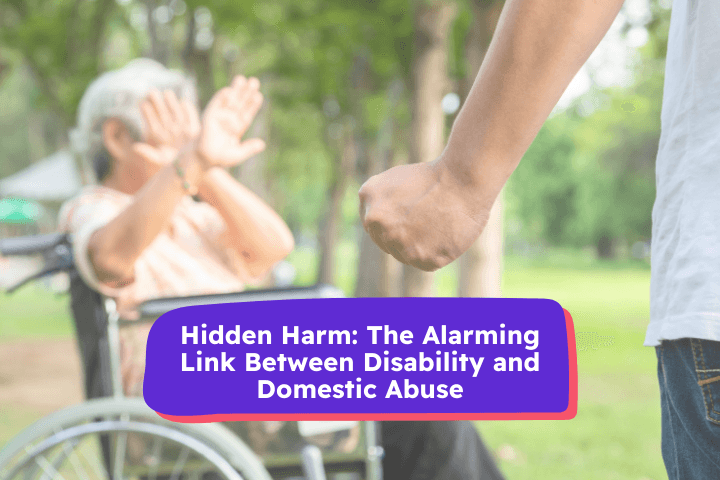All Articles
2 min read
Hidden Harm: The Alarming Link Between Disability and Domestic Abuse
Written by
Purpl
Published on
May 7, 2025

May marks Domestic and Family Violence Awareness and Prevention Month, a crucial time to shine a light on the issues often hidden behind closed doors. One such issue is the significantly higher rate of domestic abuse experienced by disabled people, including autistic individuals and those with learning disabilities.
The Stark Reality
Disabled people are at a far greater risk of experiencing domestic abuse than non-disabled people. In England and Wales:
- 14.3% of disabled adults reported experiencing domestic abuse, compared to 5.1% of non-disabled adults
- 17.5% of disabled women reported abuse – more than double the rate for non-disabled women (6.7%)
- 9.2% of disabled men experienced abuse, compared to 3.6% of non-disabled men.
Young disabled adults are particularly vulnerable:
- 19.5% of disabled individuals aged 16 to 24 reported experiencing domestic abuse – nearly three times the rate of their non-disabled peers (7.3%).
Those with specific impairments face even higher risks:
- 20.5% of people with mental health conditions
- 20.0% with social or behavioural impairments
- 19.1% with learning disabilities have experienced abuse.
Autistic people and those with learning disabilities are estimated to experience domestic abuse at three times the rate of the general population. In 2020, an estimated 200,000 people with learning disabilities in the UK were affected.
A Different Kind of Abuse
Domestic abuse towards disabled people often involves unique forms of harm:
- Withholding or destroying medication or mobility aids
- Preventing communication or social interaction
- Exploiting the victim’s dependency
Shockingly, disabled victims often endure abuse for longer periods before seeking help – 3.3 years on average, compared to 2.3 years for non-disabled victims.
Barriers to Support
Many disabled victims face added challenges when trying to access help:
- Only 1.7% of refuge vacancies in 2016/17 were wheelchair accessible
- Lack of staff training or understanding of additional needs
- Services that fail to provide appropriate accommodations
- Only 18% of accommodation-based services offer specialised support for people with learning disabilities or autism.
We Must Do Better
These statistics are a call to action. We must amplify disabled voices, improve accessibility, and ensure all services are inclusive and trauma-informed.
If you or someone you know is affected by domestic abuse, help is available:
- National Domestic Abuse Helpline (UK): 0808 2000 247 (free, 24/7)
- SafeLives: https://safelives.org.uk/research-policy-library/disabled-survivors-too
- Ann Craft Trust: https://www.anncrafttrust.org/resources/disability-domestic-abuse
No one should be left behind. At Purpl, we stand with survivors and advocate for equity, dignity, and support for everyone – especially the most vulnerable in our community.
If this post has raised issues for you, please reach out for support. You are not alone.

Sammi is autistic, has ADHD, and lives with POTS. She’s passionate about disability advocacy, accessibility, and creating spaces where people feel seen, heard, and understood. With a sharp sense of humour and a deep love for community, she speaks openly about the realities of being neurodivergent across all of her personal platforms, always aiming to challenge stigma, spark conversations, and remind others they’re not alone.
